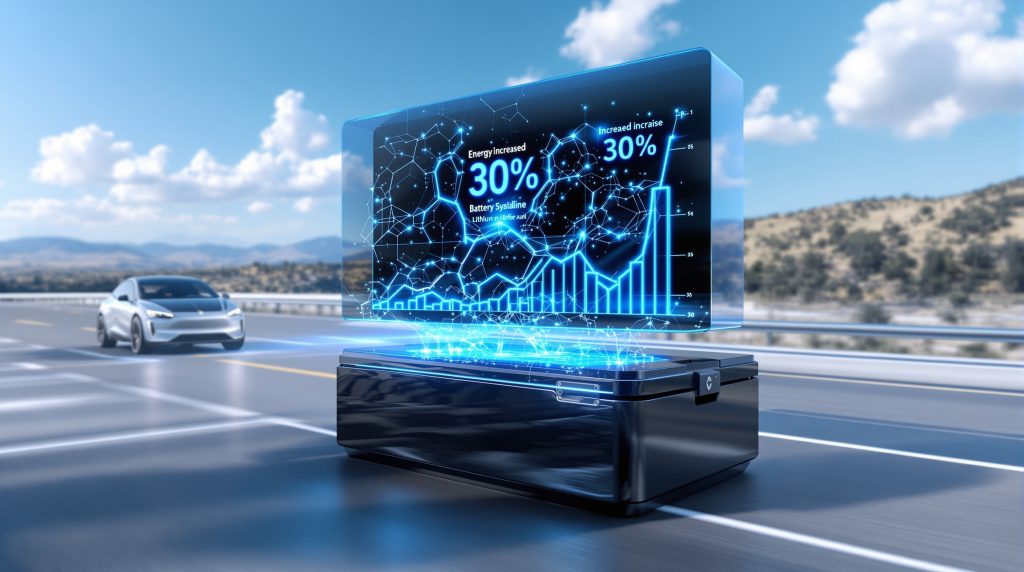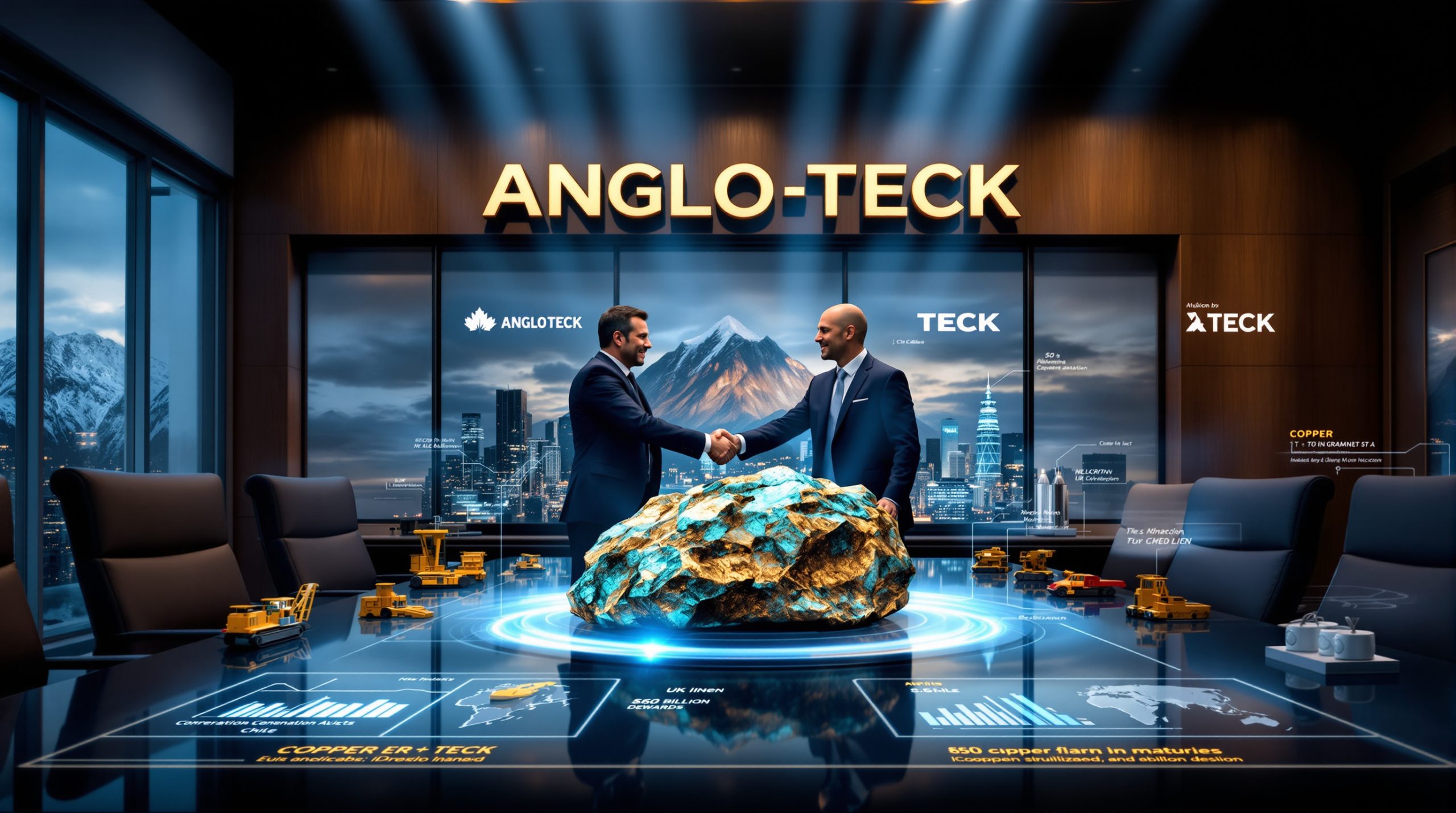Revolutionizing EV Technology: How a New Form of Graphite Is Transforming Battery Performance
Advancements in electric vehicle technology are accelerating with the development of innovative materials that address key consumer concerns. The latest breakthrough comes from Exxon Mobil, which has developed a revolutionary synthetic graphite material specifically designed for EV battery anodes. This innovative carbon molecule promises to deliver significant performance improvements that could reshape the EV landscape.
What is the new synthetic graphite technology for EV batteries?
The new synthetic graphite technology represents a fundamental leap forward in battery anode materials. Developed by Exxon Mobil, this specially engineered carbon molecule is designed to enhance the performance of lithium-ion batteries at the molecular level. According to recent announcements, this material could increase battery lifespan by approximately 30% while enabling faster charging times and extended driving ranges.
Key performance improvements of the new graphite technology
- 30% increase in overall battery lifespan, significantly extending the useful life of EV batteries
- Substantially faster charging capabilities, addressing one of the primary consumer concerns with electric vehicles
- Extended driving range, helping to eliminate range anxiety for EV owners
- Enhanced cycling stability and durability, improving performance in varied conditions
- Superior electrical conductivity properties, allowing for more efficient energy transfer
The innovation applies specifically to the anode side of lithium-ion batteries, which plays a crucial role in battery functionality and performance. By enhancing this component, Exxon's technology aims to improve multiple aspects of battery performance simultaneously.
Development timeline and commercialization plans
Exxon's ambitious timeline for this technology includes:
- Current testing phase with multiple EV manufacturers evaluating the material
- Commercial production targeted for 2029, allowing time for thorough validation and scaling
- Manufacturing scale-up through recently acquired production assets from Chicago-based Superior Graphite
- Integration with existing refinery and chemical plant infrastructure to leverage Exxon's manufacturing expertise
This timeline suggests that consumers might see vehicles incorporating this technology in the 2030-2031 timeframe, depending on automotive design cycles and battery recycling process qualification processes.
How does synthetic graphite enhance EV battery performance?
The new form of graphite in EV batteries represents a fundamental improvement in anode technology, addressing several critical performance aspects that have limited widespread EV adoption.
Technical advantages over traditional anode materials
Superior crystalline structure: The new synthetic graphite is engineered at the molecular level, creating a highly ordered crystalline structure that optimizes lithium-ion storage capacity. This precise engineering allows for more efficient intercalation and de-intercalation of lithium ions during charge and discharge cycles.
Enhanced electrical conductivity: The material facilitates more efficient energy transfer during charging and discharging processes. This improved conductivity translates directly to faster charging capabilities and better overall battery performance.
Greater chemical stability: A key advantage of the new synthetic graphite is its reduced degradation during repeated charge-discharge cycles. This enhanced stability contributes significantly to the extended battery lifespan.
Improved thermal management: Better heat dissipation properties during fast charging and high-power output scenarios help maintain optimal battery temperature, preventing thermal runaway and extending battery life.
The molecular-level engineering behind this material addresses fundamental limitations in current battery technology, potentially offering a bridge solution until completely new battery chemistries are commercially viable.
Comparative performance metrics
| Performance Aspect | Traditional Graphite | New Synthetic Graphite | Improvement |
|---|---|---|---|
| Battery Lifespan | Baseline | +30% | Significant |
| Charging Speed | Standard | Substantially faster | Major |
| Driving Range | Standard | Extended | Substantial |
| Cycle Stability | Good | Excellent | Notable |
| Production Scalability | Established | In development | Challenging |
While the specific performance metrics beyond the 30% lifespan improvement remain under evaluation, the technology represents a substantial step forward in addressing key barriers to EV adoption.
Why is graphite critical for electric vehicle batteries?
Understanding the importance of graphite in EV batteries helps contextualize why innovations in this material are so significant for the industry's future.
The fundamental role of graphite in battery chemistry
Graphite serves an essential function in lithium-ion batteries, playing a role that directly impacts performance, safety, and longevity:
- Acts as the host material for lithium ions during charging, providing the structure where lithium is stored
- Facilitates the intercalation and de-intercalation process where lithium ions move in and out of the anode
- Enables the stable movement of electrons during discharge, maintaining electrical conductivity
- Maintains structural integrity through thousands of charge cycles, preventing premature battery degradation
This functionality makes graphite one of the most critical minerals energy transition components in lithium-ion batteries, with direct implications for overall vehicle performance.
Supply considerations for battery-grade graphite
The EV industry faces several challenges related to graphite supply:
- Rapidly growing demand from expanding EV production worldwide is straining existing supply chains
- Limited natural graphite resources meeting battery specifications necessitate alternatives
- Increasing importance of synthetic alternatives for supply security and performance consistency
- Environmental concerns associated with natural graphite mining and processing
- Geopolitical issues with traditional supply sources, as China currently dominates graphite processing
These supply considerations make innovations in synthetic graphite particularly valuable, as they could potentially reduce dependence on geographically concentrated natural graphite sources while simultaneously improving performance.
How does synthetic graphite compare to natural graphite?
While both materials serve the same fundamental purpose in batteries, their properties and performance characteristics differ significantly in ways that impact battery function.
Material property differences
Purity levels: Synthetic graphite typically achieves 99.9%+ purity versus 94-98% for natural graphite. This higher purity translates to more consistent performance and fewer impurities that could degrade battery function.
Particle morphology: Synthetic graphite offers more uniform and controllable particle shapes and sizes. This consistency allows for more predictable battery performance and better packing density within the anode.
Crystalline structure: The higher degree of order and consistency in synthetic materials results in more efficient lithium-ion storage and movement. The crystalline structure directly impacts how effectively lithium ions can move in and out of the material.
Surface characteristics: More precisely engineered surface properties in synthetic graphite optimize the interface with the electrolyte, improving ion transfer efficiency and reducing unwanted side reactions.
These material differences directly impact battery performance, with synthetic graphite generally offering superior performance at the cost of higher production expenses.
Performance and cost trade-offs
| Aspect | Natural Graphite | Synthetic Graphite | Exxon's New Graphite |
|---|---|---|---|
| Cost | Lower | Higher | Premium (projected) |
| Purity | Good | Excellent | Superior |
| Performance | Standard | Enhanced | Revolutionary |
| Environmental Impact | Mining-intensive | Energy-intensive | Under evaluation |
| Supply Chain | Geographically concentrated | More distributed | Potentially more secure |
The higher cost of synthetic graphite has historically been a limiting factor for its adoption, but as battery performance becomes increasingly critical for EV competitiveness, manufacturers are willing to invest in premium materials that deliver superior results. Exxon's innovation potentially pushes this performance envelope even further, though likely at a premium price point.
What are the broader implications for EV adoption?
The development of advanced graphite materials addresses several key barriers to widespread electric vehicle adoption, potentially accelerating the transition to electric mobility.
Addressing consumer concerns
Range anxiety: Extended driving distances between charges directly address one of the most frequently cited concerns among potential EV buyers. The new form of graphite in EV batteries could potentially add significant range without requiring larger, heavier battery packs.
Charging time: Faster recharging capabilities improve convenience and practicality for everyday use, especially for consumers without home charging options. Reducing charging times to be more comparable with refueling a conventional vehicle removes a major adoption barrier.
Battery longevity: The 30% improvement in battery lifespan translates to reduced replacement costs and improved resale value, enhancing the total cost of ownership equation for EVs. This extension could mean batteries last the entire useful life of the vehicle in many cases.
Overall performance: Enhanced acceleration and power delivery capabilities make EVs more appealing to performance-oriented consumers. As battery metals investment drives innovation, the performance advantages of electric drivetrains become even more pronounced.
By addressing these key consumer concerns, advanced graphite technology could help move EVs from early adopters to the mainstream market.
Market impact projections
The introduction of superior battery materials could have far-reaching effects on the EV market:
- Potential acceleration of EV adoption rates by addressing key performance limitations that have deterred mainstream buyers
- Possible reduction in total battery costs through extended lifespan, even if the materials themselves are more expensive
- Competitive advantage for manufacturers implementing the technology first, potentially reshaping market leadership
- New benchmarks for battery performance expectations, raising the bar for the entire industry
While quantifying the exact market impact remains challenging, addressing fundamental performance limitations could help overcome the plateau in EV adoption that some markets have experienced after initial growth.
How does this innovation fit within Exxon's strategic direction?
This development represents a significant expansion of Exxon's involvement in the energy transition landscape, building on a longer history in battery technology than many might realize.
Exxon's history in battery technology
Exxon has a surprisingly extensive history in battery technology development:
- Pioneered lithium-ion battery technology in the 1970s, laying groundwork for today's energy storage solutions
- Developed plastic film for the first rechargeable lithium-ion battery in 1991, a critical component for battery safety
- Created separator materials for battery components approximately two decades ago, demonstrating ongoing involvement
- Now entering the battery materials manufacturing space with synthetic graphite production
This history shows that Exxon's move into advanced battery materials builds on decades of relevant experience rather than representing a completely new direction.
Strategic positioning in the energy transition
Exxon's approach to the energy transition shows a distinct strategy:
- Leveraging existing molecular transformation expertise rather than pivoting to completely new technologies
- Utilizing refinery and chemical plant infrastructure for new applications, maximizing return on existing assets
- Focusing on materials science rather than direct battery manufacturing, staying within core competencies
- Developing parallel initiatives in lithium extraction and other battery components to create a broader portfolio
As CEO Darren Woods has stated, Exxon doesn't plan to become a battery maker but will use its refineries, chemical plants, and laboratories to produce materials for the energy transition. This approach allows the company to participate in the growth of electric vehicles while leveraging its existing expertise and infrastructure.
What other graphite innovations are emerging in the battery sector?
While Exxon's synthetic graphite represents a significant advancement, it exists within a broader landscape of innovation in battery anode materials.
Alternative carbon-based anode materials
Graphene-enhanced anodes: Single-atom-thick carbon sheets incorporated into graphite materials can dramatically improve conductivity and performance. Graphene's exceptional electrical and thermal properties make it a promising addition to battery anodes.
Hard carbon derivatives: Non-graphitic carbon structures offer different intercalation properties that can complement traditional graphite. These materials can store lithium ions through different mechanisms, potentially offering advantages for specific applications.
Silicon-graphite composites: Hybrid materials combining silicon's high theoretical capacity with graphite's stability represent one of the most actively researched areas. Silicon can store up to 10 times more lithium than graphite but suffers from volume expansion issues that graphite helps mitigate.
Recycled synthetic graphite: Sustainable approaches to graphite production using recycled carbon sources are gaining attention as the industry focuses more on environmental impact. These processes aim to reduce the carbon footprint of synthetic graphite in electric vehicles production.
Each of these approaches offers different advantages and challenges, with various companies pursuing parallel development paths.
Emerging research directions
The battery research community is exploring several promising directions for next-generation anode materials:
- Nano-engineered surface treatments for improved electrolyte interaction, reducing unwanted side reactions
- Doped graphite materials with enhanced conductivity properties through the introduction of other elements
- Gradient structures optimizing different performance aspects throughout the anode material
- Bio-derived carbon precursors for more sustainable production methods with lower environmental impact
These research directions suggest that Exxon's innovation, while significant, exists within a highly competitive and rapidly evolving technology landscape.
What challenges remain for synthetic graphite implementation?
Despite its performance advantages, several hurdles must be overcome before widespread adoption of advanced synthetic graphite materials becomes feasible.
Production scaling considerations
High energy requirements for synthetic graphite manufacturing represent a significant challenge. The production process typically involves heating carbon precursors to extremely high temperatures (2,500-3,000°C) for extended periods, resulting in substantial energy consumption.
Complex quality control for battery-grade materials requires sophisticated testing and validation procedures. Ensuring consistent performance across large production volumes presents significant technical challenges.
Capital-intensive production facilities necessitate substantial upfront investment. Building production capacity at the scale required for widespread EV adoption requires billions in capital expenditure.
Long lead times for capacity expansion mean that even with aggressive investment, scaling production takes years rather than months. This timeline explains Exxon's 2029 target for commercial production despite the technology's promise.
Economic and environmental factors
Higher production costs compared to natural graphite create pricing challenges, particularly for price-sensitive vehicle segments. The premium performance must justify the premium price for manufacturers.
Carbon footprint of energy-intensive manufacturing processes raises questions about overall environmental benefits. The energy used in production must be considered alongside the benefits during the use phase.
Competition for production resources and expertise in a rapidly growing sector could create bottlenecks. As multiple companies pursue similar technologies, securing the necessary talent and equipment becomes increasingly challenging.
Regulatory considerations for new battery materials include safety certifications and environmental compliance. New materials must undergo extensive testing and validation before widespread deployment in consumer vehicles.
How will this technology impact the graphite supply chain?
The emergence of advanced synthetic graphite will reshape market dynamics for battery materials, potentially creating new winners and losers in the supply chain.
Market disruption potential
Reduced dependence on natural graphite mining could impact traditional producers, particularly in regions like China that currently dominate supply. This shift could rebalance global trade flows for battery materials.
Shift toward more specialized manufacturing capabilities favors companies with advanced materials science expertise. The value chain may increasingly reward technological differentiation over raw material access.
New entrants from petrochemical and materials science sectors could challenge established battery material suppliers. Companies like Exxon bring different capabilities and scale compared to traditional mining companies.
Changed valuation metrics for battery material suppliers may emerge as performance and technological differentiation become more important than volume alone. This could reshape investment priorities throughout the sector.
Geographic implications
Potential reshoring of critical battery material production to regions with advanced manufacturing capabilities and secure energy supplies could reshape global supply chains. Countries with strong technical capabilities but limited natural resources may benefit.
Reduced reliance on geographically concentrated natural graphite sources improves supply security for battery manufacturers. This diversification reduces vulnerability to disruptions in any single region.
New manufacturing hubs based on chemical engineering expertise rather than mineral resources may emerge. Regions with strong petrochemical industries could develop new specializations in battery materials.
Strategic partnerships between energy and automotive sectors are likely to increase as supply chain security becomes a competitive advantage. Vertical integration and long-term supply agreements may become more common as EVs transforming mining operations continue to reshape the industry.
FAQs about the new graphite technology for EV batteries
When will this new graphite technology be available in consumer vehicles?
Based on Exxon's development timeline, commercial production is targeted for 2029, with testing currently underway with multiple EV manufacturers. Consumer vehicles featuring this technology would likely appear in the 2030-2031 timeframe, depending on automotive design cycles and battery qualification processes. The integration of new materials into production vehicles typically requires extensive validation testing, which explains the extended timeline from current testing to commercial availability.
How will this technology affect EV prices?
While the premium material may initially increase battery costs, the 30% extended lifespan could ultimately reduce the total cost of ownership. Vehicles may command slightly higher upfront prices but offer better long-term value through improved durability, range, and performance. For manufacturers, the calculation involves balancing the higher material costs against the improved performance and potential for price premiums from consumers seeking better battery characteristics.
Will this technology work with existing battery designs?
The new synthetic graphite is designed to function within the established lithium-ion battery architecture, specifically on the anode side. This allows for integration into existing manufacturing processes with modifications rather than requiring completely new battery designs. Battery manufacturers would need to adapt their anode formulations and potentially adjust other components to optimize performance with the new material, but the fundamental battery architecture remains unchanged.
How does this compare to solid-state battery technology?
While solid-state batteries represent a different technological approach focusing on electrolyte materials, this graphite innovation improves conventional lithium-ion batteries. Both technologies aim to enhance performance, but through different mechanisms and with different implementation timelines. Solid-state batteries promise even greater improvements in energy density and safety but face significant manufacturing challenges that have delayed commercialization. Exxon's graphite innovation could provide meaningful improvements within the existing battery paradigm while solid-state technology continues development.
What environmental benefits might this technology provide?
Extended battery lifespan could significantly reduce the environmental impact of EV batteries by decreasing replacement frequency and improving recyclability. However, the full environmental assessment must consider the energy intensity of synthetic graphite production compared to natural graphite mining. A comprehensive life cycle analysis would need to evaluate the additional energy used in manufacturing against the benefits of longer battery life, improved efficiency, and reduced resource extraction over the battery's extended lifetime.
Further Exploration
The development of advanced synthetic graphite materials represents just one facet of the rapidly evolving electric vehicle battery landscape. As the technology progresses toward commercialization, it will be important to monitor developments in manufacturing scalability, cost optimization, and comparative performance against other emerging battery technologies.
For the EV industry, improvements in battery performance remain critical to achieving mass market adoption. By addressing key consumer concerns around range, charging time, and longevity, advanced materials like Exxon's synthetic graphite could help accelerate the transition to electric mobility while creating new opportunities throughout the battery supply chain. The ongoing mining industry evolution will continue to be shaped by these technological developments as the world transitions to more sustainable transportation solutions.
Ready to Capitalize on the Next Major Mineral Discovery?
Stay ahead of the market with Discovery Alert's proprietary Discovery IQ model, which delivers real-time notifications on significant ASX mineral discoveries and transforms complex data into actionable insights. Explore why historic discoveries can generate substantial returns by visiting Discovery Alert's dedicated discoveries page and begin your 30-day free trial today.




